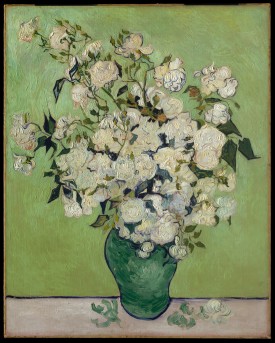In my oft-quoted passages from Exodus (I promise, I will get back to that leadership series one day, it was getting good…), I’ve pointed to two people, Bezalel and Oholiab, as the first vocational artists in the Bible – they are, at the same time, called to arts leadership. Production and leadership seem to be married, from the beginning. Scripture says:
Then the Lord said to Moses, “See, I have chosen Bezalel … and I have filled him with the Spirit of God, with wisdom, with understanding, with knowledge and with all kinds of skills—to make artistic designs for work in gold, silver and bronze, to cut and set stones, to work in wood, and to engage in all kinds of crafts. Moreover, I have appointed Oholiab … to help him. (Exodus 31: 1-6; emphasis added)
Then, a few chapters later, Moses repeats God’s command to the Israelites, but with one significant change:
Then Moses said to the Israelites, “See, the Lord has chosen Bezalel … and he has filled him with the Spirit of God, with wisdom, with understanding, with knowledge and with all kinds of skills to make artistic designs for work in gold, silver and bronze, to cut and set stones, to work in wood and to engage in all kinds of artistic crafts. And he has given both him and Oholiab … the ability to teach others. (35:30-35; emphasis added)
Oholiab was an artist also – he’s included among the “skilled workers and designers” – and assisting Bezalel on that massive project would have been a huge leadership role in its own right. So it’s interesting that, when Moses passed on God’s instructions, the only one that he doesn’t repeat verbatim downplays Oholiab’s “helping” role and emphasizes Bezalel’s and Oholiab’s equal “teaching” role. I admit to having an overactive imagination when it comes to filling in gaps in scripture, but I wonder if maybe Moses – an experienced leader of artists – was adding his own wisdom to God’s command.
Perhaps to Bezalel, Moses wanted to say: “Yes, you’re the visionary, the boss, the star of this whole deal (besides God, of course, and me, Moses). But you don’t get to just swagger around here and give orders. You need to show these young kids what you know and help them learn to do it, too. I know you’d rather be making art yourself, or orchestrating others in their creating; but God’s given you the ability to teach others for a reason, and he expects you to use it. One day you’re going to be gone, and God’s still going to want art to get made for his glory.”
And perhaps to Oholiab, Moses wanted to say: “No, you’re not going to be the star of this whole deal – in fact, your job is going to be the star’s helper, his coffee-getter, his side-man, his canvas-stretcher. But you do also have great skill, and a lot to offer to others, particularly these young kids who also have been given talents by God and a passion to use them. They need what you know, and God wants you to stop longing after the stardom he’s chosen to give to someone else, and make a real, immediate difference in the lives of the young artists around you. What you give to others will outlive anything you make yourself.”
Or something like that. Or maybe I’m just projecting. It’s been known to happen.
I’ve talked before here about how important it is for the experienced artist/arts leader to embrace our scripturally-ordained mentoring role. I’m going to talk more about it in the next two parts of this series. In part 2, I’ll share my own experience as an apprentice, and will ask you to share yours. In part 3, we’ll look at the need for mentoring in our current educational, economic, and artistic landscape, and we’ll hear from some students about their need.
Why?
Church and Art Network is beginning a major initiative to become an Oholiab to young Christians, to help them make knowledgeable choices and a productive start to their arts careers. Stay tuned for details. It’s exciting stuff that you’ll want to be part of!







